interkriti®
YOUR GATEWAY TO CRETE
|
Crete
List Grid Map
Found
506
- Showing :
261 - 280
 Archanes An excellent specimen of a specialized building, one of the first structures erected during the period of the Cretan State. It was designed by the architect Salivero, one of Prince George's officials. The plans were completed in 1901 and the construction was accomplished thanks to donations of rich Archanians living in the U.S.A. The building is Pi-shaped in plan, has two storeys and a basement, it is built of stone and its roof is partially wooden and covered with tiles. It is a monumental but well balanced structure with many harmonic and elegant Neoclassical features. Since its construction, the building has been used as a school. During the German occupation it housed General Muller's division. Source: The Hellenic Ministry of Culture 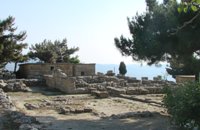 Archanes The Minoan villa at Vathypetro was most likely the residence of a local ruler. Its architecture is comparable to that of a "Little Palace": it has a central and west court, a small tripartite shrine, a three-columned portico, storerooms and workshops. It seems that the construction of the building was never completed. Interesting elements of its architecture are the installations of a wine-press in the south wing and an oil-press in the courtyard.  Seli Ampelou, Lassithi Plateau It is the most significant group of windmills preserved on Crete. It occupies the northern entrance to the Lasithi plateau and is the landmark of the whole area. Today 24 windmills are preserved (out of the original 26), 7 of which extend to the south of the road that enters the plateau while the rest are built to the north of it. All the mills belong to the one-sided type of windmill, that grinds in a standard position, always on the same direction of the wind. Windmills of this type are preserved on Crete and on Carpathos but the Cretan ones are generally more carefully built and more elegant. The group of windmills has been declared a work of art since 1986. The mills belong to individuals and some of them have been restored while others still remain half-ruined. Source: The Hellenic Ministry of Culture 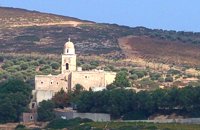 Sitia It is an historical monastery of the 15th century, which collapsed in the earthquake of 1612 and was rebuilt with the financial aid of the Venetians. During the Ottoman conquest of Crete, the monastery was destroyed and devastated by the Turks. In 1704 the monastery was declared stauropegion. During the Ottoman occupation there was a school in the monastery, while, after 1870, it was founded there a school of mutual teaching. The Monastery is a stauropegion fortress. The main building of 800 m2 has three floors, which are divided into cells, guest - houses, kitchens, the abbot' s residence and warehouses. The katholicon is a two-aisled church; the northern aisle is dedicated to the Virgin, and the southern posterior aisle, to St John the Theologian. The monastery' s characteristic bell tower bears relief crowns and crosses with inscriptions and the date 1558. In the Monastery, there is also an interesting Museum.
Image Library
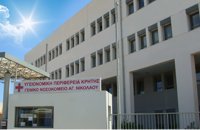 Agios Nikolaos, Lassithi Agios Nikolaos General Hospital (GR: Γενικό Νοσοκομείο Αγίου Νικολάου) is located in Agios Nikolaos in the prefecture of Lassithi. The St. Nicholas Hospital is a large modern hospital that provides full medical treatment and services to the population of the area since 1940. 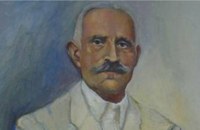 born in Viannos Author and journalist(1862-1920). He was born in the village Ano Viannos in 1862. In his childhood he moved with his family in Piraeus. Quite soon though, only 3 years later, they got back at their special homeland and there, he finished the elementary school. Though he'd started attending high school in Iraklion, he finished it in Varvakeio School, in Athens. His first novel was published in the newspaper 'Estia', in 1884. He was enrolled in the Philosophy School, but he never graduated. In 1885 he got back in Crete, where he took a job as a teacher in Modi, Kydonias. His revolutionary character motivated him into writing patriotic articles in the local paper, an act that infuriated the Turkish occupants to such an extent that he had to flee in Athens, only this time he stayed permanently. In Athens he worked for several newspapers like 'Estia', 'Asty' and 'Embros'. For more than 20 years he kept writing chronicles, which helped him win respect among the intellectuals. He used to use the pseudonym 'Diavatis' (Passer-by). During his long literary career he wrote: 'Gramvoussa, i epanastasis en Kriti' (Gramvoussa, the revolution in Crete), 'I olokaftossis tou Arkadiou' (The Holocaust of Arkadi), 'Otan imoun daskalos' (When I was a teacher), 'Proti Agapi' (First Love), 'Eno diavaina' (When I was passing by), 'O Patouchas', 'Zampeliou Kai Kritovoulidou, Istoria Kritikon Epanastaseon' (Zampeliou and Kritovoulidou, Cretan Revolutions History), 'Imere kindynon kai fovou' (Days in danger and terror). Kondylakis’ entire work is collected in his 'Apanta' (Collected works).Ioannis Kondylakis died in Irakleion, in 1920. Geographical information Crete is the largest island in Greece and the second biggest (after Cyprus) of the East Mediterranean. It lies at the Southern Aegean Sea and at the crossroads of three continents Europe, Asia and Africa. Crete covers an area of 8.336 sq.kms. The length of the island is 260 km, but the shore-length is 1.046 km. The biggest width is 60 km while the smallest is 12 km. A high mountain range crosses the island from West to East, formed by three different groups of mountains. To the West the White Mountains (2.453 m), in the middle the mountain of Idi (Psiloritis-2.456 m) and to the East the mountain of Dikti (2.148 m). These mountains gifted Crete with fertile plateaus like Lassithi, Omalos and Nida, caves like Diktaion and Idaion cave, and gorges like the famous Gorge of Samaria. There are also quite a few valleys and small plains. The largest and most important plain is that of Messara located between Psiloritis and Asterousia mountains at the centre - south of the island. Administration Crete is one of the 13 regions of Greece. Crete region general secretariat (Γενική Γραμματεία Περιφέρειας Κρήτης - www.crete-region.gr) is based in Iraklion (Heraklion - Ηράκλειον). Crete is divided to four prefectures (Hania, Rethymnon, Heraklion and Lassithi) and 70 municipalities. A former division of the island in 20 counties (or districts or provinces) is not any more administratevely in use, although it is very important in terms of history and culture. (That is the reason why this division is used on this website.) Prefecture and municipal authorities are elected by the people while the secretary general is appointed by the state. Crete has 16 representatives in the Greek parliament (total 300). People The population of the island is approximately 630.000 (2005), and over a third of it is found in the three major cities, Iraklion (~150.000), Hania(~50.000) and Rethymnon (~30.000) located on the north coast of the island. Although globalisation, tourism and economic growth have inevitably changed the way of life in Crete, especially in the large urban centres, to a modern and cosmopolitan style, the Cretans still preserve the bonds with their rich folk traditions and cultural heritage. The Cretan dances, Pentozalis, Haniotikos, Pidihtos, Maleviziotikos etc, are still danced at every opportunity and the "madinades" and the "rizitika" songs resound in every celebration. The extra virgin olive oil the legumes and vegetables constitute the base of the local cuisine as did for thousands of years and made the Cretan Diet renowned worldwide for its benefits on longevity and good health. In the countryside, even in our days many old Cretan men and women wear the traditional costume and the Cretan idiom is widely spoken even in the large cities. There is also an exceptional artistic production in traditional sectors such as pottery, embroidery, jewellery etc and of course the very special Cretan Music. The violin (Violi), the lyre (lyra) and the laouto remain the characteristic musical instruments and there are many remarkable new musicians, singers and composers who continue the work of the famous Nikos Xylouris, Thanassis Skordalos, Kostas Moundakis and others. Arts and literature had always played a significant role in the life of the Cretan people, famous painters like El Greco, Michael Damaskinos, writers like Nikos Kazantzakis, poets like Vincenzos Kornaros and Odysseas Elitis, composers like Mikis Theodorakis, Manos Hatzidakis and Giannis Markopoulos are Cretans or of Cretan origin. Today there are many important Cretans with significant contribution in all aspects of the cultural life in Greece. The educational level of the Cretans is relatively high (compared to the other regions of Greece). The educational system consists of the following stages:
Cretans love sports and there is plenty of choices from mountaineering to all kind of watersports to tennis, basketball and footbal which is the most popular. Two Cretan football (soccer) teams compete in the Greek Super Leage (2006-2007 - www.superleaguegreece.net/), OFI (ΟΦΗ: www.ofi.gr/) and Ergotelis (Εγοτέλης :www.ergotelis.gr/). Iraklion has one of the biggest stadia in Greece Pancretan Stadium with a capasity of 26.000 seated. Find related pages...: People & Traditions, Arts & Literature, Sports - Outdoor activities Economy The economy of Crete which was mainly based on farming started changing visibly during the 70's. While there is a still an emphasis on farming and stock breeding , due to the climate and the terrain of the island, there is a drop in manufacturing and a big increase on the services industry (mainly tourism related).
The most dynamic sector of the Cretan economy is tourism. The excellent climate of the island, the beautiful landscape along with the remarkable tourist resorts, attract as many as 3.000.000 visitors every year. Today the tourism infrastructure in Crete caters to all tastes. There is accomodation of every possible category , from large luxury hotels with all the facilities (swimming pools, SPA, sports and recreation facilities etc.), to smaller family owned apartments, to camping facilities. Visitors can arrive to the island through two international airports in Iraklion and Hania, or by boat to the ports of Iraklion, Hania, Rethimno and Agios Nikolaos. Crete is also known for the quality of its agricultural products that, due to the good climate, are produced all year around. These include olives, grapes, horticultural products, potatoes, oranges etc. Most of the land cultivated consists of small farms cultivating traditional products. Starting in the 60's, and due to the temperate climate of the island, there was a big increase in cultivating in greenhouses. The main products that are currently being exported in the Greek and international (particularly European) Market are: 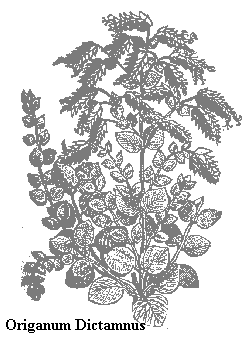
Stock breeding has traditionally played, an extremely important role to the life of the Cretans, and still does. In the Cretan plateaus sheep and goats are bred for their milk, wool and meat. The Cretan cheeses, especially Gruyere (Graviera), and "anthotiros" are famous for their quality and distinctive taste. Another occupation for quite a few Cretans is fishing. Although the quantity of fish in Crete is limited the quality is generally very good. There are several "spin-off" industries involved with the packaging and shipping of these products. Other industries operating on the island are involved with excavation and processing of marble, production of plastics, farming machinery etc.. The sector of real estate and building is also very active and there are some industries producing ready mixed concrete, bricks and other building stuff. Crete has a flourishing commercial activity. There are a lot of shops that cater to the tastes and demands of both the locals and the tourists that visit the island every year. There is also the potential for cooperation with foreign companies , from companies whose products can get a high demand in the markets abroad. These include , but are not limited to, leather goods, jewellery, furniture, paints, building material and equipment, medical equipment. Find related pages...: Business dir. Infrastructures PortsCrete has two of the most important ports of the East Mediterranean Sea, the port of Heraklion and the port of Chania (Souda). The island is connected with mainland Greece and quite a few of the Aegean islands, Europe and the rest of the world with a large number of passenger ships (ferry-boats) and freighter ships. The two ports play a significant role in effectively supporting the efforts of Crete to be an important commercial centre in the Mediterranean. There are also two smaller ports in Rethymno and in Agios Nikolaos. Additionally there are many small ports, marinas and anchorages around the island. AirportsThere are two international airports operating in the island in Heraklion (Nikos Kazanztzakis) and in Chania (Ioannis Daskalogiannis) while a smaller one located in Sitia (East Crete) will soon be operational. The island is connected with most of the airports in Greece, Cyprus and many other European countries, with regular or charter flights. Companies that operate regularly on these airports are Olympic Airways, Aegean Airlines and Cyprus Airways. Air traffic during the summer months increases quite a bit reaching 130 plane arrivals per day at Heraklion Airport. Roads The main road in Crete is the national road that follows the north seashore of the island from East to West. This is a fairly good road that handles most of the traffic of the island. The rest of the roads range from smaller asphalt roads to all kinds of dirt roads. There is an extensive public bus service (KTEL) covering all the island. Find related pages...: Transportation Universities, Research CentersThere are three higher education institutions in Crete, the University of Crete with schools in Heraklion and Rethymnon, the Technical University of Crete, based in Chania and the Technological Education Institute of Crete, based in Iraklion, with schools in Hania, Agios Nikolaos, Ierapetra and Sitia. Heraklion is also the base of the Foundation for Research and Technology-Hellas (FORTH) one of the most important research organizations in Greece. The Foundation comprises six research Institutes with five of them based in Crete (Biology, Computer Science, Applied Mathematics, Laser and Microelectronics, Mediterranean Studies) There is also the Institute of Marine Biology based in Gouves with an exceptional aquarium and a number of institutions in the field of Agronomics (Institute of Viticulture, Vegetable crops and Floriculture of Heraklion, The Mediterranean Agronomic Institute of Chania, Institute of Subtropical Plants and Olive Tree of Chania, an extended network of agronomic research stations etc.)The whole island is a field for archaeological and historical research carried out mainly by the Ministry of Culture and the University of Crete. Find related pages...: Science & Research Telecommunications There is a fairly good cable network throughout the island operating by OTE (Organisation of Telecommunications of Hellas). Internet is also available via dial up connections and ADSL (up to 4mbps - only in major urban centers). Mobile telephony (GSM 900/1800/3G) covers even the most remote part of the island and it is provided by three or four companies with a wide selection of programs. Find related pages...: Telecommunications Hospitals - Health The medical services in Crete are generally of high standards. There is at least one general hospital in the major cities and medical centers in alsmost every smaller town. Very well equipped private clinics and doctors' offices of all medical specialties can also be found in the large cities. The major Social security organisation in Greece is IKA (Social Insurance Institute). It covers 5,530,000 workers and employees and provides 830,000 pensioners with retirement pension. Find related pages...: Health History The Island has a long history that goes back to the Neolithic times. It is however known for the Minoan civilization that flourished from 2600 to 1100 B.C. The island is full of relics of the Minoan ages the most famous being the palaces at Knossos and Festos. Neolithic Period (6.000-2.600 BC) Known history in Crete starts during the Neolithic ages. Recent excavations (especially in Eleftherna) have demonstrated the existence of various small communities during that period. Minoan Period (2.600-1.100 BC)  The Minoan civilisation is probably the biggest reason Crete is known. The Minoans established a naval empire in the Mediterranean during this period. During this time, art and science flourished. Their civilisation vanished abruptly, the most probable explanation being that the sudden eruption of the volcano in Thira (Thera or Santorini) created huge tidal waves that swept away all traces of civilisation.After that, the invasion of the Achaeans and later the Dorians marked the end of the Minoan period. The Minoan civilisation is probably the biggest reason Crete is known. The Minoans established a naval empire in the Mediterranean during this period. During this time, art and science flourished. Their civilisation vanished abruptly, the most probable explanation being that the sudden eruption of the volcano in Thira (Thera or Santorini) created huge tidal waves that swept away all traces of civilisation.After that, the invasion of the Achaeans and later the Dorians marked the end of the Minoan period.Dorians (1.100-67 BC) The Dorian years were marked by the first appearance of iron tools, and the deterioration of the Minoan Empire to various city-states. Roman Period - First Byzantine Period (67 BC-824 AD) Crete was occupied at 67 BC by the Romans. Gortys, became the capital of the province of Crete. Crete, becomes part of the Byzantine empire from 325 AD to 824 AD and is converted to Christianity. Arab occupation (824 -961 AD) The Arabs occupied Crete, and founded the city of Chandax (Heraklion). The city was liberated by the Byzantine emperor Nikiforos Fokas at 961 AD. This marked the beginning of the Second Byzantine Period of Crete which ended at 1204. Second Byzantine Period (961-1204 AD) Crete becomes again part of the Byzantine empire. Venetian occupation (1204-1669 AD) At 1204, during the Fourth Crusade, Constantinople falls to the Crusaders. Crete was sold to the Venetians. In the years that followed there were numerous unsuccessful attempts by the Cretans to liberate the island. After the fall of Constantinople to the Turks (1453), artists and scholars from all parts of the former Byzantine empire fled to Crete. Arts and science flourished again, with the biggest representative of this renaissance being the painter "El Greco" (Domenicos Theotokopoulos) who was born in Crete but actually spend most of his life in Spain. Turkish occupation (1669-1898 AD) Chandax, falls to the Turks in 1669. This occupation lasted until 1878. During these years the Cretans organised numerous revolutions that were always put down by the Turks. Finally, in 1898, with the intervention of the then Great Powers, Crete was declared an autonomous state.  Independent Crete (1898-1913 AD) Crete remained autonomous until 1913 when it united with Greece. 1913 - today Crete was the last stand off of the Allied forces in Greece during the Second World War. The Cretans paid dearly (like most of Greece) for their resistance to the Axis forces. Whole villages were burned down (Viannos villages, Kandanos and Anogia being the most known). Read...: History of Crete Find related pages...: History of Crete Climate The climate in Crete is temperate. The atmosphere can be quite humid, depending on the proximity to the sea. The winter is fairly mild and tolerable. Snow fall is practically unknown to the plains, but quite frequent in the mountains. During summer, average temperatures are in the high 30's - low 20's (Celcius). Probably the best time to visit Crete is spring and autumn. “Bad weather” days in winter are often interrupted, during January and the first fortnight of February, with sunny days, known as ‘Halcyon days’ since ancient times. 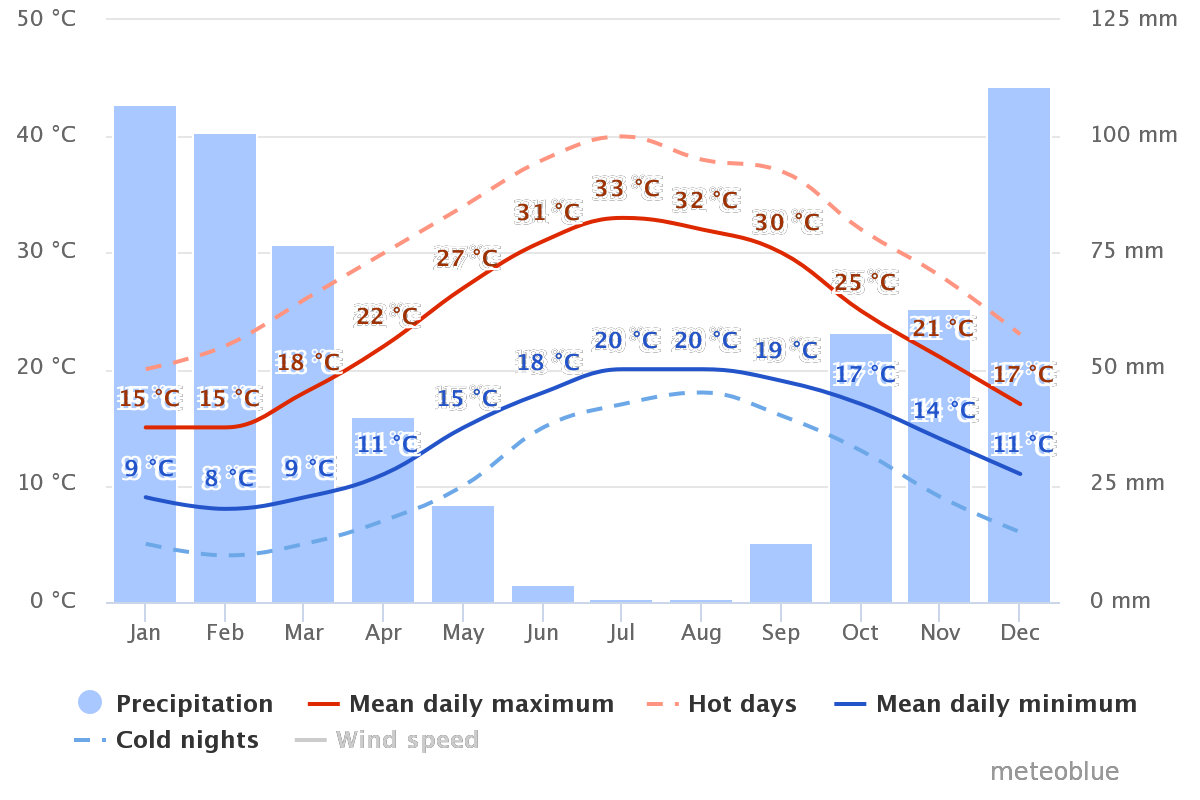 Cloudy, sunny, and precipitation days  Wind speed 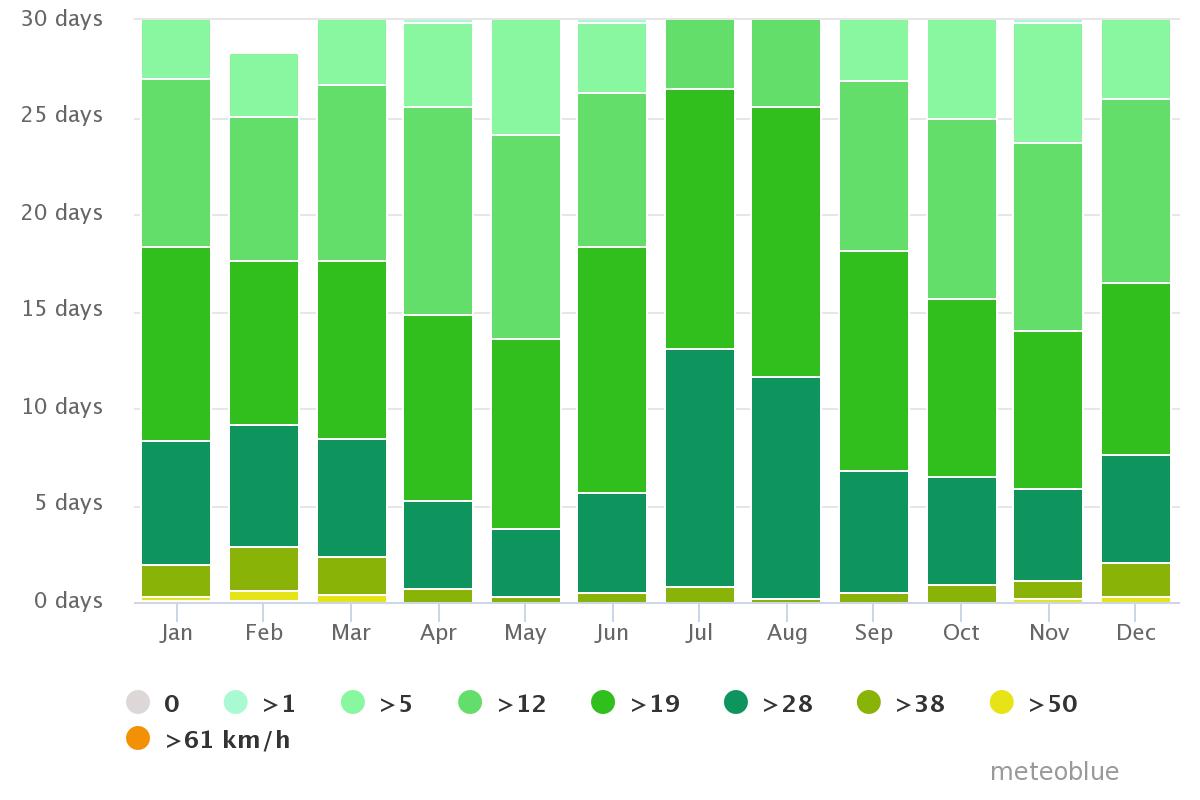
wather data are from the area of Heraklion Flora & Fauna  There are 2000+ different plant species in Crete with approximately 10 % being indigenous in the island. The Cretan flora is especially rich in herbal and pharmaceutical plants like oregano, thyme and labdanum. Indeed, quite a big percentage of these are collected, dried and sold to the local market and abroad. There is also an amazing variety of flowers in Crete, like tulips, cyclamen, orchids etc. Due to the climate and the land terrain the blossoming period lasts for more than 6 months (March to September). Finally Crete is the northern point on the globe where certain African trees are encountered , like cedar and palm. There are 2000+ different plant species in Crete with approximately 10 % being indigenous in the island. The Cretan flora is especially rich in herbal and pharmaceutical plants like oregano, thyme and labdanum. Indeed, quite a big percentage of these are collected, dried and sold to the local market and abroad. There is also an amazing variety of flowers in Crete, like tulips, cyclamen, orchids etc. Due to the climate and the land terrain the blossoming period lasts for more than 6 months (March to September). Finally Crete is the northern point on the globe where certain African trees are encountered , like cedar and palm. Crete has also a varied fauna. There are certain subspecies of animals that are indigenous only in Crete, like the local wild goat, kri kri, and the Cretan tree frog. There are also various birds from a number of subspecies of the common hawk, to the grey heron. Finally, the sea life is fairly varied, and certain beaches in the south of the island offer protection to the caretta-caretta (sea turtle) during its reproduction period. Crete has also a varied fauna. There are certain subspecies of animals that are indigenous only in Crete, like the local wild goat, kri kri, and the Cretan tree frog. There are also various birds from a number of subspecies of the common hawk, to the grey heron. Finally, the sea life is fairly varied, and certain beaches in the south of the island offer protection to the caretta-caretta (sea turtle) during its reproduction period. Find related pages...: Environment & Nature Crete Fast Facts Location GREECE (HELLAS), at the Southern Aegean SeaCoordinates (Iraklion): Lat: 35° 20' North - Lon: 25° 08' East Coordinates (Hania): Lat: 35° 30' North - Lon: 24° 02' East Area 8.336 sq.kms / Length (E-W) :260 km Width (N-S) : 60 max - 12 min It is the largest island in Greece. The highest point is Psiloritis mountain at 2456m. Population The population of the island is approximately 630.000 (yr. 2005).Major cities (Munic. population) : Iraklion (151.000) - Hania (53.000) - Rethymno (31.000) Religion Greek Orthodox 99%Language Greek - Cretan idiom.English is also widely spoken especialy in the tourist areas Monetary Unit The official currency is the Euro (€) divided into 100 cents.Weights and Measures Metric system - Metres, Kilograms, litres, °C...Voltage 220 - 240V,Frequency: 50 Hz, Sockets/Outlets: 2 pin + earth/ground "Shuko" or 2 pin (round) lighting type.Standard time zone UTC/GMT +2 hours (Eastern European Time)Daylight Saving Time: last Sunday of March, 3:00 am local standard time last Sunday of October, 4:00 am local daylight time Telephone International country code: + 30 (Greece)Local Numbers: 28xxxxxxxx (10 digits) Mobile Numbers : 6xxxxxxxxx (10 digits) Mobile Network: GSM 900/1800 Mhz Internet Broadband internet is available in major populated areasWireless is available in the historical center of Heraklion town, and in most large hotels. Mobile internet 3G or 4G is offered by all providers and covers almost the entire island. Iraklion Old Town Map and Virtual Tour Temenos, Iraklion An interactive map of the old town, with tourist information, sights, streets, hotels, monuments, historical facts and lots of pictures. A valuable guide for the visitors to the city of Iraklion. (Requires Flash)
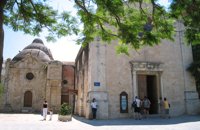 Iraklion Agia Ekaterini church and Exhibition of Byzantine Art and Ecclesiastical objects. A small sinaitic church of St. Catherine with a Basilica design, houses an exhibition with works of art from the Cretan renaissance. Among the exhibits are some of the most important icons of the Cretan School, ecclesiastical books and manuscripts, vestments, ecclesiastical vessels and relics, wall-paintings, wood-carvings and sculpture. 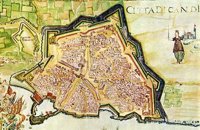 Iraklion The fortified enclosure of the Venetian Chandakas of the 15th century, which is still preserved today, is one of the most significant monuments of its kind in the whole Mediterranean basin. Triangular in shape, with its base at the sea, the mighty enceinte has a perimeter of about 5.5 kilometres. The hallmark of the defensive layout are the bastions, linked by curtain walls decorated at many points by escutcheons and the lion of St. Mark, symbol of Venetian omnipotence. The gates in the enceinte, which served to link the town to the countryside, still stand as important architectural monuments. To this day, the walls that withstood the Ottoman siege in the mid-17th century mark out the boundary of the old town. 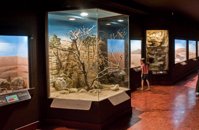 Iraklion, Dermatas Gate The Natural History Museum of Crete is housed in the renovated former premises of the Heraklion Public Power Corporation, on Dermatas’ Bay. With an area of 3,500 m2, it is the largest exhibition of its kind in the Mediterranean, showcasing the natural environment of Crete and the wider Mediterranean area in an innovative, original way. |
|||||||||||||||||||||||||||||||||||||||||||||||||||
|
| |||||||||||||||||||||||||||||||||||||||||||||||||||
C
O
N
T
E
N
T
S
O
N
T
E
N
T
S


